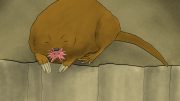Two new sets of guidelines dealing with potentially dangerous biological research have just been published in the U.S. These guidelines follow the publication of a controversial experiment on avian influenza (H5N1) in ferrets that resulted in a temporary moratorium on H5N1 research last year.
In 2011, two experiments—one led by Ron Fouchier in the Netherlands and the other by Yoshihiro Kawaoka in the United States—demonstrated that, with a few mutations, bird flu could be made to spread between ferrets, which are good models for influenza in humans.
Birds can transmit H5N1 to humans, but the disease does not easily spread between mammals. The research could help health experts predict a pandemic before it happens, but it was considered by some to be irresponsible and dangerous. A science advisory board in the U.S. argued that it should not be published except in redacted form, to prevent bioterrorism.
Flu scientists around the world agreed last January to a voluntary moratorium on further research of this kind until the security concerns could be sorted out. Eventually the advisory board allowed the full publication of the studies, which appeared in journals in mid-2012. The moratorium ended in January of this year, when a letter appeared in Science and Nature announcing that it had served its purpose of giving regulators a chance to discuss the security implications of this research.
The new guidelines are the result of those discussions. The U.S.’s National Institute of Health (NIH), which funds most of this research, released its final framework for approval of funding for certain types of experiments. The Office of Science and Technology Policy (OSTP) also published its draft policy on institutional oversight for so-called “dual-use” research.
The NIH policy introduces two new layers of review for studies like the ones done by Fouchier and Kawaoka. Studies that will cause H5N1 to be transmissible in mammals via respiratory droplets will have to demonstrate a clear public health benefit and show how researchers can minimize the risk of accidents or malicious misuse of the virus.
The OSTP policy deals with oversight of research involving certain pathogens and toxins off a list of 15 – including bird flu, ebola, and anthrax. It outlines the responsibilities of scientists, institutions, and the government with respect to dual-use research. Fouchier found the policy’s list of agents and toxins odd.
“If I were to do harm, I would use bugs that are not on this list,” Fouchier told Nature. He argued in favour of a general code of conduct rather than a list of specific rules.
“Laws and regulations will slow down people with good intentions, but will do nothing against people with bad intentions,” remarked Fouchier.
These policies only apply to U.S.-based and U.S.-funded research. The World Health Organization is meeting in Geneva, Switzerland, to hold an international consultation on dual-use research. The voluntary moratorium will continue in countries that have not yet implemented similar policies.



